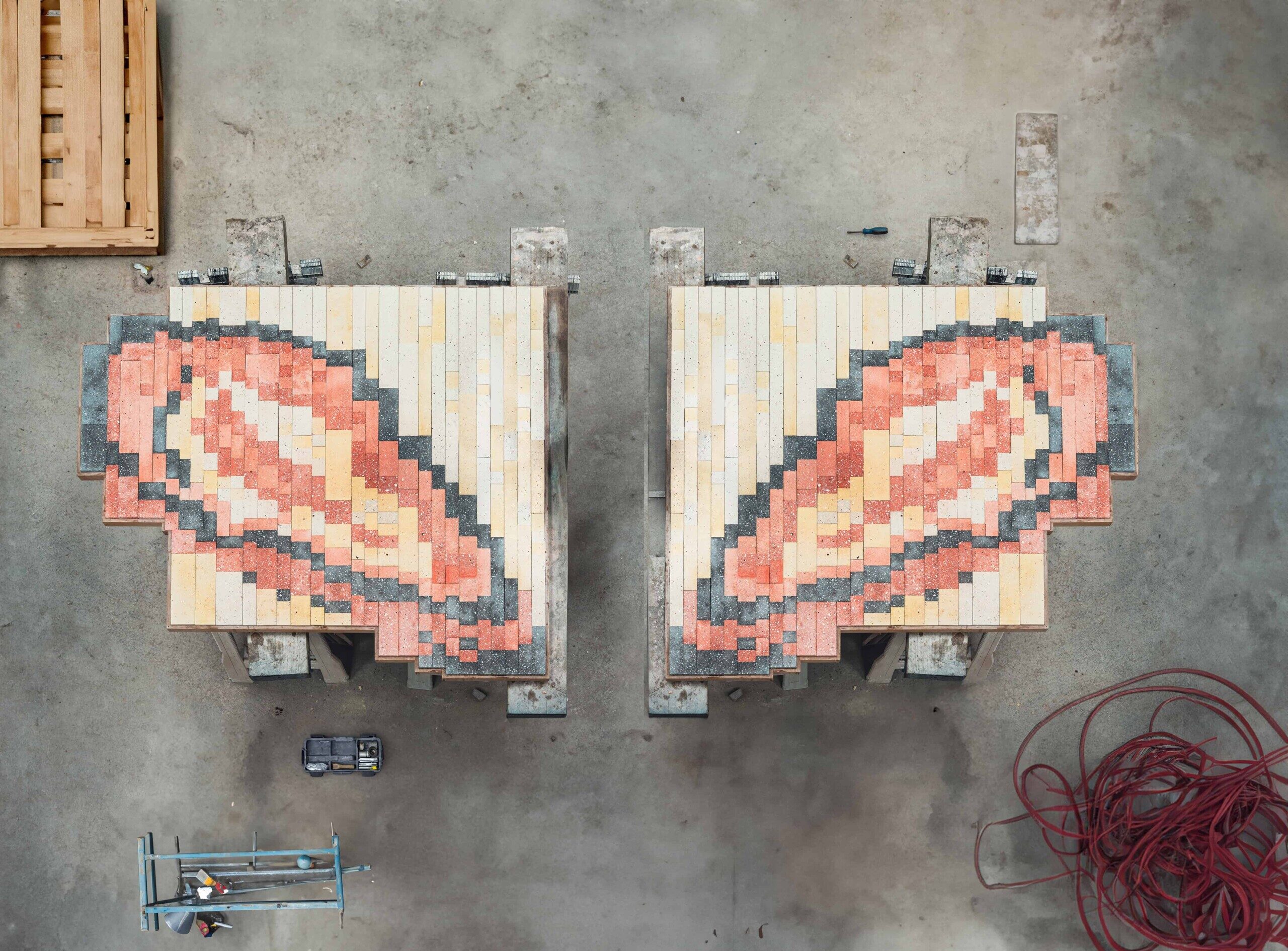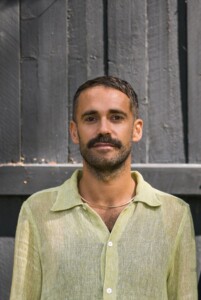Wheelwright Prize Lecture: Daniel Fernández Pascual, “Being Shellfish: Architectures of Intertidal Cohabitation”

Bivalve Murals, Cooking Sections (2023-ongoing). Photo by CLIMAVORE CIC.
Event Description
Tidal zones are liminal spaces that challenge the ecological, legal and financial thresholds of coastal areas. They appear, disappear, reappear, and constantly change in size and chemistry, while shaped by new human-made seasons of wetland draining and ocean pollution. Following CLIMAVORE, a framework that investigates ways of metabolizing climate breakdown, these littoral spaces are at the core of entanglements between risk and social security, profit margins and contamination struggles, geological processes and weather events; between what is used and what is refused. Thinking with waste seashells and beach-cast seaweeds allows us to expand the possibilities of caring for coastal ecologies, while sensing and monitoring human actions affecting them. As awareness about the environmental footprint of construction and the ‘mitigation’ of its associated toxicities increases, transitions to other forms of building may connect to materials from intertidal origin that can also contribute to addressing the broken food chain. Seaweeds and bivalves have been key in human and nonhuman diets, and used as building substrate across geographies over millennia. Their role in providing nourishment and shelter has supported coastal dwellers to invent unique forms of collective usership through cultivation, harvest, sourcing, processing; and building techniques such as thatching, cladding, insulation, and plastering. Both ingredient and material, they can advance an architecture for the tidal commons.
Speaker
 Daniel Fernández Pascual is Senior Research Fellow and one of the Principal Investigators at CLIMAVORE x Jameel at RCA. He holds an MArch from ETSA Madrid, an MSc in Urban Design from TU Berlin and Tongji University Shanghai, and a PhD from the Centre for Research Architecture, Goldsmiths, University of London. In 2013 he co-founded Cooking Sections with Alon Schwabe. Based in London, their work explores systems that organize the world through food. Using installation, performance, mapping and video, their research-based practice operates within the overlapping boundaries of architecture, visual culture and ecology. Since 2015 Cooking Sections are working on multiple iterations of the long-term CLIMAVORE project, exploring how to eat as humans change climates. Cooking Sections was part of the exhibition at the U.S. Pavilion, 2014 Venice Architecture Biennale. Their work has also been exhibited at Los Angeles Public Art Triennial; Carnegie Museum of Art, Pittsburgh; Arthur Ross Architecture Gallery Columbia GSAPP, New York; P.5 New Orleans Triennial; Sharjah Architecture Triennial; Tate Britain and Serpentine Galleries, London; Manifesta12, Palermo; Storefront for Art & Architecture, New York; Lafayette Anticipations, Paris; SALT, Istanbul; and have been residents in Headlands Center for the Arts, California; and The Politics of Food at Delfina Foundation, London. Published books include The Empire Remains Shop (Columbia Books on Architecture and the City, 2018), Salmon: A Red Herring (isolarii, 2020) and Offsetted (Hatje Cantz, 2022).
Daniel Fernández Pascual is Senior Research Fellow and one of the Principal Investigators at CLIMAVORE x Jameel at RCA. He holds an MArch from ETSA Madrid, an MSc in Urban Design from TU Berlin and Tongji University Shanghai, and a PhD from the Centre for Research Architecture, Goldsmiths, University of London. In 2013 he co-founded Cooking Sections with Alon Schwabe. Based in London, their work explores systems that organize the world through food. Using installation, performance, mapping and video, their research-based practice operates within the overlapping boundaries of architecture, visual culture and ecology. Since 2015 Cooking Sections are working on multiple iterations of the long-term CLIMAVORE project, exploring how to eat as humans change climates. Cooking Sections was part of the exhibition at the U.S. Pavilion, 2014 Venice Architecture Biennale. Their work has also been exhibited at Los Angeles Public Art Triennial; Carnegie Museum of Art, Pittsburgh; Arthur Ross Architecture Gallery Columbia GSAPP, New York; P.5 New Orleans Triennial; Sharjah Architecture Triennial; Tate Britain and Serpentine Galleries, London; Manifesta12, Palermo; Storefront for Art & Architecture, New York; Lafayette Anticipations, Paris; SALT, Istanbul; and have been residents in Headlands Center for the Arts, California; and The Politics of Food at Delfina Foundation, London. Published books include The Empire Remains Shop (Columbia Books on Architecture and the City, 2018), Salmon: A Red Herring (isolarii, 2020) and Offsetted (Hatje Cantz, 2022).
Anyone requiring accessibility accommodations should contact the Public Programs Office at (617) 496-2414 or [email protected].
#GSDEVENTS